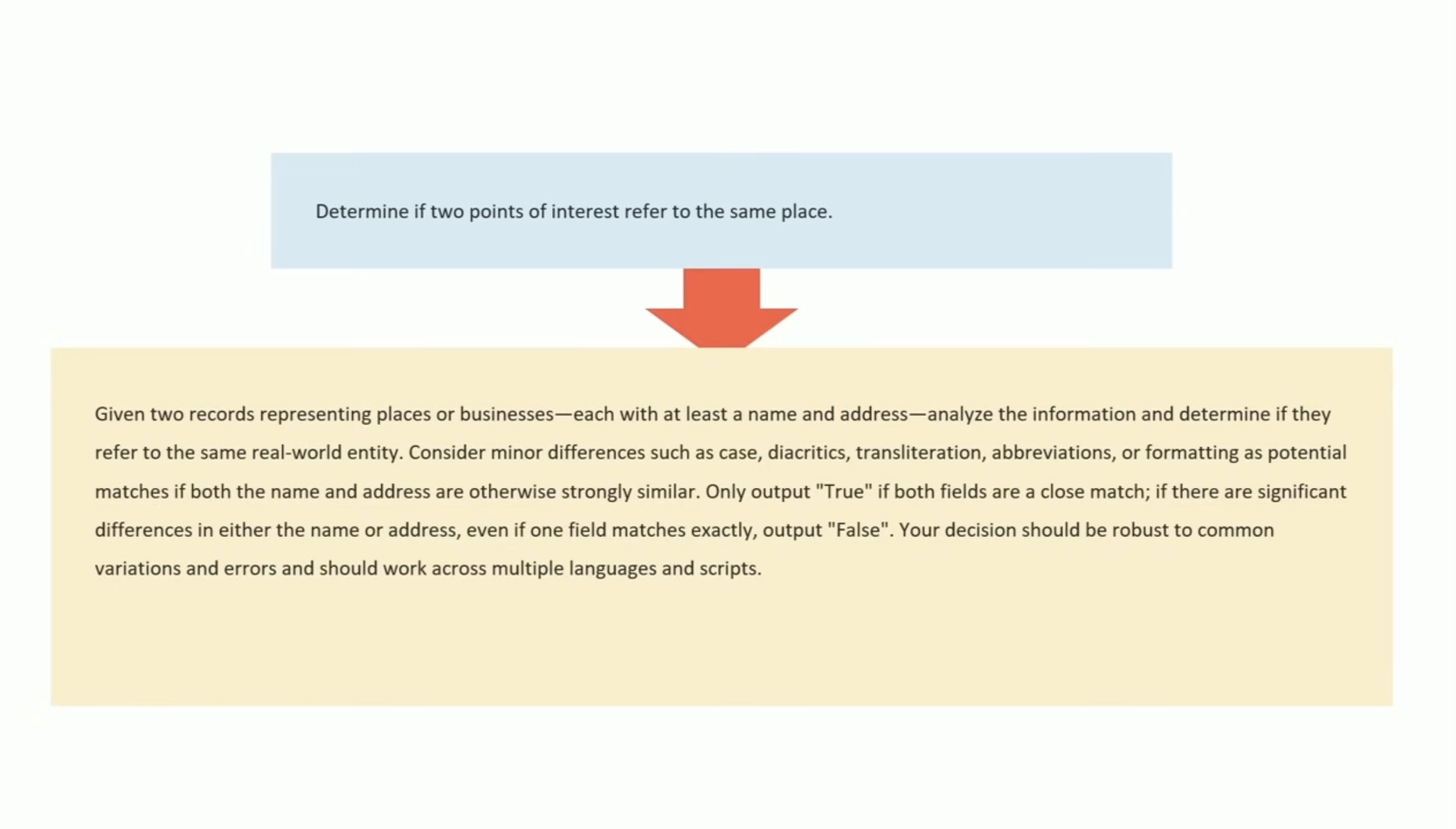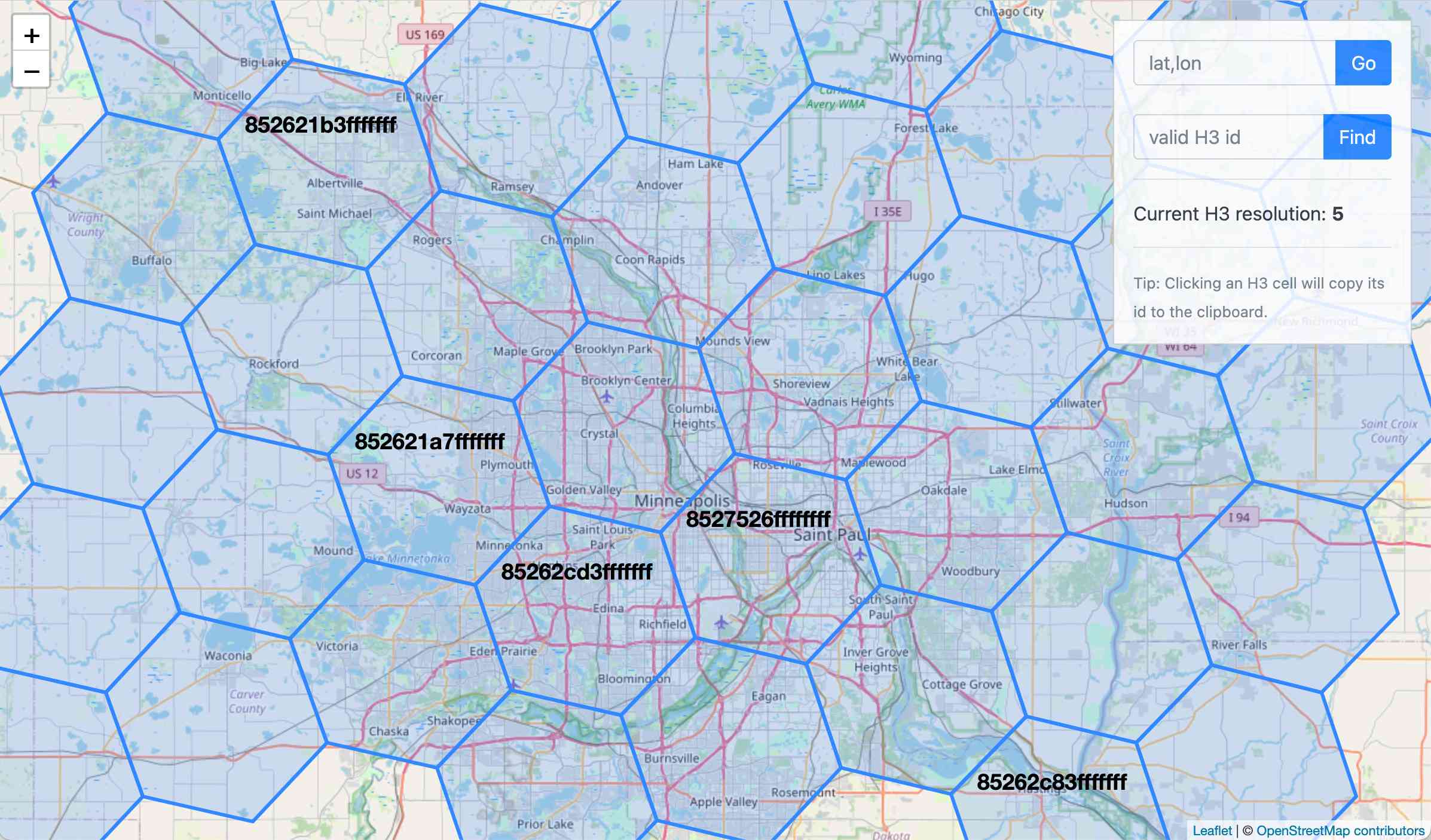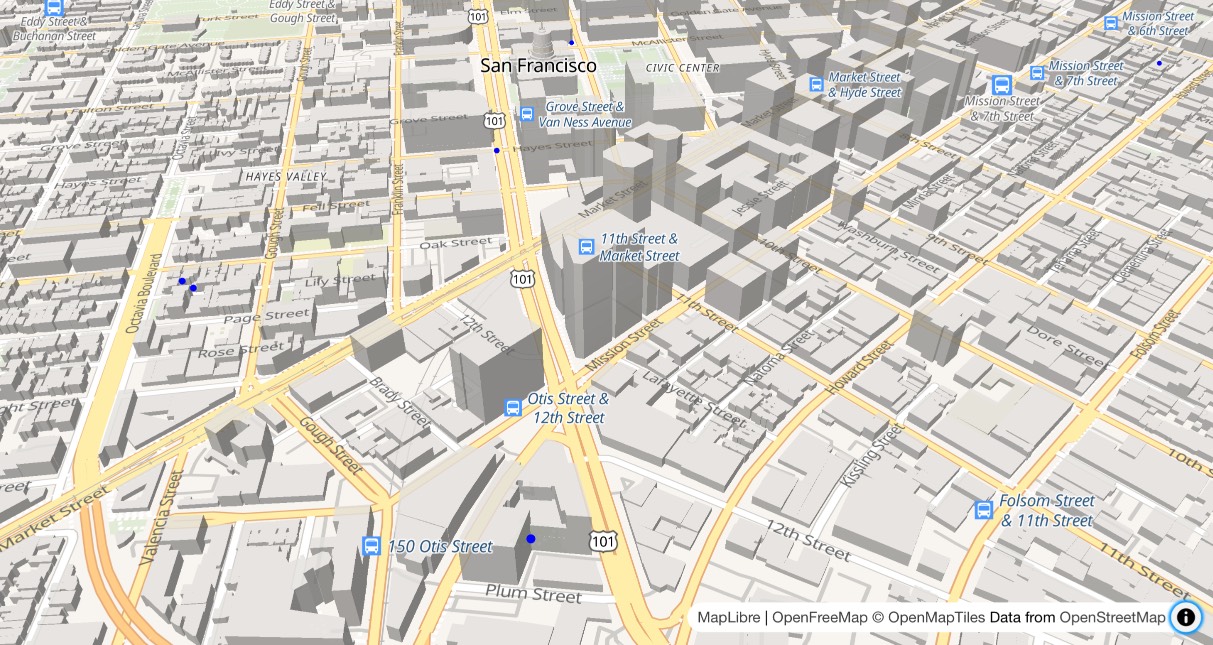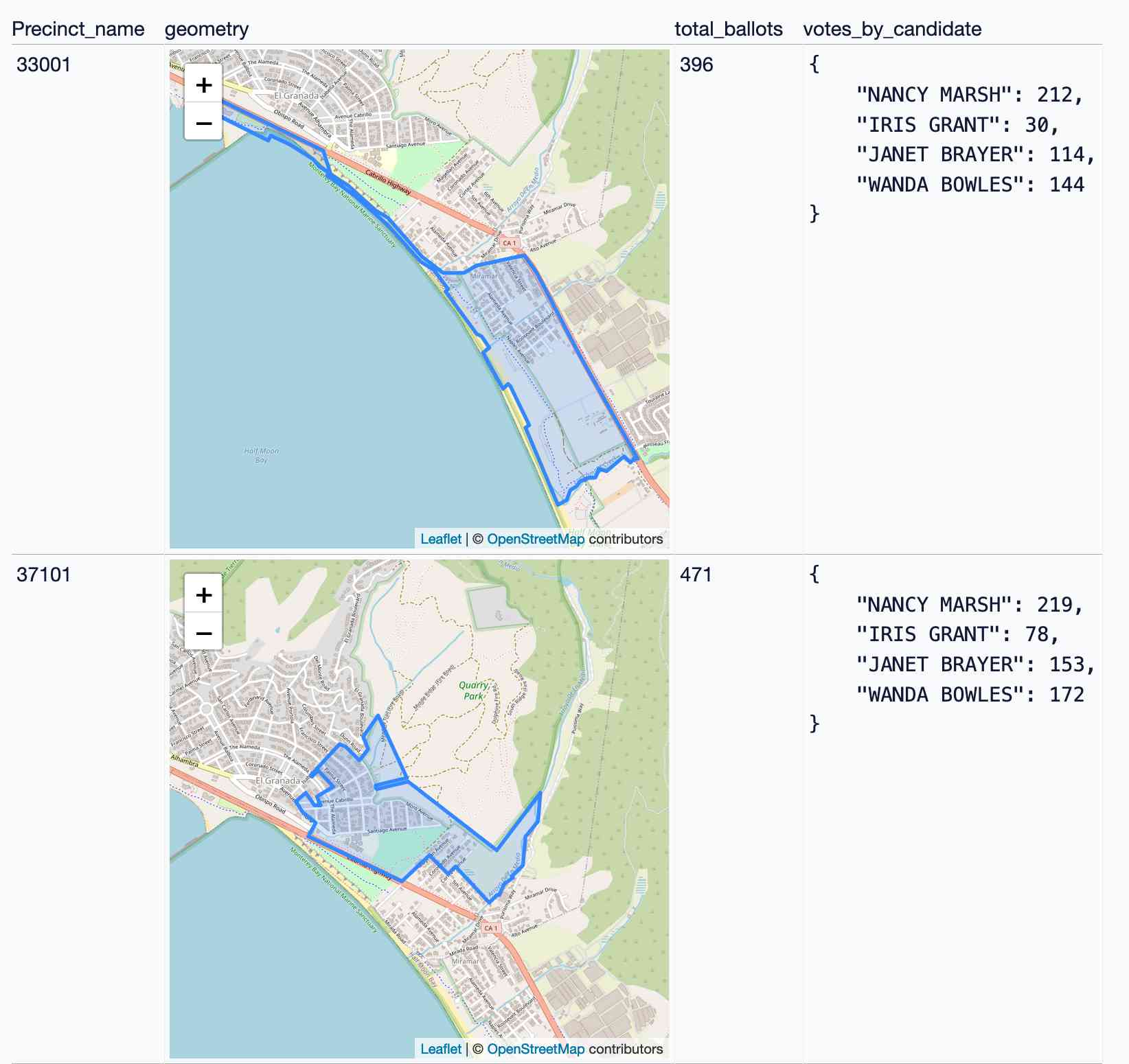18 posts tagged “geospatial”
2025
Let the LLM Write the Prompts: An Intro to DSPy in Compound Al Pipelines. I've had trouble getting my head around DSPy in the past. This half hour talk by Drew Breunig at the recent Databricks Data + AI Summit is the clearest explanation I've seen yet of the kinds of problems it can help solve.
Here's Drew's written version of the talk.
Drew works on Overture Maps, which combines Point Of Interest data from numerous providers to create a single unified POI database. This is an example of conflation, a notoriously difficult task in GIS where multiple datasets are deduped and merged together.
Drew uses an inexpensive local model, Qwen3-0.6B, to compare 70 million addresses and identity matches, for example between Place(address="3359 FOOTHILL BLVD", name="RESTAURANT LOS ARCOS") and Place(address="3359 FOOTHILL BLVD", name="Los Arcos Taqueria"').
DSPy's role is to optimize the prompt used for that smaller model. Drew used GPT-4.1 and the dspy.MIPROv2 optimizer, producing a 700 token prompt that increased the score from 60.7% to 82%.

Why bother? Drew points out that having a prompt optimization pipeline makes it trivial to evaluate and switch to other models if they can score higher with a custom optimized prompt - without needing to execute that trial-and-error optimization by hand.
Spatial Joins in DuckDB (via) Extremely detailed overview by Max Gabrielsson of DuckDB's new spatial join optimizations.
Consider the following query, which counts the number of NYC Citi Bike Trips for each of the neighborhoods defined by the NYC Neighborhood Tabulation Areas polygons and returns the top three:
SELECT neighborhood, count(*) AS num_rides FROM rides JOIN hoods ON ST_Intersects( rides.start_geom, hoods.geom ) GROUP BY neighborhood ORDER BY num_rides DESC LIMIT 3;
The rides table contains 58,033,724 rows. The hoods table has polygons for 310 neighborhoods.
Without an optimized spatial joins this query requires a nested loop join, executing that expensive ST_Intersects() operation 58m * 310 ~= 18 billion times. This took around 30 minutes on the 36GB MacBook M3 Pro used for the benchmark.
The first optimization described - implemented from DuckDB 1.2.0 onwards - uses a "piecewise merge join". This takes advantage of the fact that a bounding box intersection is a whole lot faster to calculate, especially if you pre-cache the bounding box (aka the minimum bounding rectangle or MBR) in the stored binary GEOMETRY representation.
Rewriting the query to use a fast bounding box intersection and then only running the more expensive ST_Intersects() filters on those matches drops the runtime from 1800 seconds to 107 seconds.
The second optimization, added in DuckDB 1.3.0 in May 2025 using the new SPATIAL_JOIN operator, is significantly more sophisticated.
DuckDB can now identify when a spatial join is working against large volumes of data and automatically build an in-memory R-Tree of bounding boxes for the larger of the two tables being joined.
This new R-Tree further accelerates the bounding box intersection part of the join, and drops the runtime down to just 30 seconds.
I counted all of the yurts in Mongolia using machine learning (via) Fascinating, detailed account by Monroe Clinton of a geospatial machine learning project. Monroe wanted to count visible yurts in Mongolia using Google Maps satellite view. The resulting project incorporates mercantile for tile calculations, Label Studio for help label the first 10,000 examples, a model trained on top of YOLO11 and a bunch of clever custom Python code to co-ordinate a brute force search across 120 CPU workers running the model.
DuckDB is Probably the Most Important Geospatial Software of the Last Decade. Drew Breunig argues that the ease of installation of DuckDB is opening up geospatial analysis to a whole new set of developers.
This inspired a comment on Hacker News from DuckDB Labs geospatial engineer Max Gabrielsson which helps explain why the drop in friction introduced by DuckDB is so significant:
I think a big part is that duckdbs spatial extension provides a SQL interface to a whole suite of standard foss gis packages by statically bundling everything (including inlining the default PROJ database of coordinate projection systems into the binary) and providing it for multiple platforms (including WASM). I.E there are no transitive dependencies except libc.
[...] the fact that you can e.g. convert too and from a myriad of different geospatial formats by utilizing GDAL, transforming through SQL, or pulling down the latest overture dump without having the whole workflow break just cause you updated QGIS has probably been the main killer feature for a lot of the early adopters.
I've lost count of the time I've spent fiddling with dependencies like GDAL trying to get various geospatial tools to work in the past. Bundling difficult dependencies statically is an under-appreciated trick!
If the bold claim in the headline inspires you to provide a counter-example, bear in mind that a decade ago is 2015, and most of the key technologies In the modern geospatial stack - QGIS, PostGIS, geopandas, SpatiaLite - predate that by quite a bit.
A5 (via) A5 is a new "global, equal-area, millimeter-accurate geospatial index" by Felix Palmer:
It is the pentagonal equivalent of other DGGSs, like S2 or H3, but with higher accuracy and lower distortion.
Effectively it's a way of dividing the entire world into pentagons where each one covers the same physical area (to within a 2% threshold) - like Uber's H3 but a bit weirder and more fun. An A5 reference implementation written in TypeScript is available on GitHub.
This interactive demo helps show how it works:

Why pentagons? Here's what the A5 docs say:
A5 is unique in that it uses a pentagonal tiling of a dodecahedron. [...] The benefit of choosing a dodecahedron is that it is the platonic solid with the lowest vertex curvature, and by this measure it is the most spherical of all the platonic solids. This is key for minimizing cell distortion as the process of projecting a platonic solid onto a sphere involves warping the cell geometry to force the vertex curvature to approach zero. Thus, the lower the original vertex curvature, the less distortion will be introduced by the projection.
I had to look up platonic solids on Wikipedia. There are only five: Tetrahedron, Cube, Octahedron, Dodecahedron and Icosahedron and they can be made using squares, triangles or (in the case of the Dodecahedron) pentagons, making the pentagon the most circle-like option.
wolf-h3-viewer.glitch.me (via) Neat interactive visualization of Uber's H3 hexagonal geographical indexing mechanism.

Here's the source code.
Why does H3 use hexagons? Because Hexagons are the Bestagons:
When hexagons come together, they form three-sided joints 120 degrees apart. This, for the least material, is the most mechanically stable arrangement.
Only triangles, squares, and hexagons can tile a plane without gaps, and of those three shapes hexagons offer the best ratio of perimeter to area.
2024
Visualizing local election results with Datasette, Observable and MapLibre GL
Alex Garcia and myself hosted the first Datasette Open Office Hours on Friday—a live-streamed video session where we hacked on a project together and took questions and tips from community members on Discord.
[... 3,390 words]OpenFreeMap (via) New free map tile hosting service from Zsolt Ero:
OpenFreeMap lets you display custom maps on your website and apps for free. […] Using our public instance is completely free: there are no limits on the number of map views or requests. There’s no registration, no user database, no API keys, and no cookies. We aim to cover the running costs of our public instance through donations.
The site serves static vector tiles that work with MapLibre GL. It deliberately doesn’t offer any other services such as search or routing.
From the project README looks like it’s hosted on two Hetzner machines. I don’t think the public server is behind a CDN.
Part of the trick to serving the tiles efficiently is the way it takes advantage of Btrfs:
Production-quality hosting of 300 million tiny files is hard. The average file size is just 450 byte. Dozens of tile servers have been written to tackle this problem, but they all have their limitations.
The original idea of this project is to avoid using tile servers altogether. Instead, the tiles are directly served from Btrfs partition images + hard links using an optimised nginx config.
The self-hosting guide describes the scripts that are provided for downloading their pre-built tiles (needing a fresh Ubuntu server with 300GB of SSD and 4GB of RAM) or building the tiles yourself using Planetiler (needs 500GB of disk and 64GB of RAM).
Getting started is delightfully straightforward:
const map = new maplibregl.Map({
style: 'https://tiles.openfreemap.org/styles/liberty',
center: [13.388, 52.517],
zoom: 9.5,
container: 'map',
})
I got Claude to help build this demo showing a thousand random markers dotted around San Francisco. The 3D tiles even include building shapes!

Zsolt built OpenFreeMap based on his experience running MapHub over the last 9 years. Here’s a 2018 interview about that project.
It’s pretty incredible that the OpenStreetMap and open geospatial stack has evolved to the point now where it’s economically feasible for an individual to offer a service like this. I hope this turns out to be sustainable. Hetzner charge just €1 per TB for bandwidth (S3 can cost $90/TB) which should help a lot.
Towards Standardizing Place. Overture Maps announced General Availability of its global maps datasets last week, covering places, buildings, divisions, and base layers.
Drew Breunig demonstrates how this can be accessed using both the Overture Explorer tool and DuckDB, and talks about Overture's GERS IDs - reminiscent of Who's On First IDs - which provide stable IDs for all kinds of geographic places.
2023
Geospatial SQL queries in SQLite using TG, sqlite-tg and datasette-sqlite-tg. Alex Garcia built sqlite-tg—a SQLite extension that uses the brand new TG geospatial library to provide a whole suite of custom SQL functions for working with geospatial data.
Here are my notes on trying out his initial alpha releases. The extension already provides tools for converting between GeoJSON, WKT and WKB, plus the all important tg_intersects() function for testing if a polygon or point overlap each other.
It’s pretty useful already. Without any geospatial indexing at all I was still able to get 700ms replies to a brute-force point-in-polygon query against 150MB of GeoJSON timezone boundaries stored as JSON text in a table.
TG: Polygon indexing (via) TG is a brand new geospatial library by Josh Baker, author of the Tile38 in-memory spatial server (kind of a geospatial Redis). TG is written in pure C and delivered as a single C file, reminiscent of the SQLite amalgamation.
TG looks really interesting. It implements almost the exact subset of geospatial functionality that I find most useful: point-in-polygon, intersect, WKT, WKB, and GeoJSON—all with no additional dependencies.
The most interesting thing about it is the way it handles indexing. In this documentation Josh describes two approaches he uses to speeding up point-in-polygon and intersection using a novel approach that goes beyond the usual RTree implementation.
I think this could make the basis of a really useful SQLite extension—a lighter-weight alternative to SpatiaLite.
2022
lon lat lon lat lon. Tom MacWright’s definitive guide to the (latitude, longitude) v.s. (longitude, latitude) debate. The answer is frustrating: both orders are used by significant software, so there’s no single answer that will satisfy everyone. I’ve recently been mostly convinced over to the longitude, latitude side mainly because that’s a better fit for the non-geospatial x, y pattern.
2019
kepler.gl. Uber built this open source geospatial analysis tool for large-scale data sets, and they offer it as a free hosted online tool—just click Get Started on the site. I uploaded two CSV files with 30,000+ latitude/longitude points in them just now and used Kepler to render them as images.
2017
Building a location to time zone API with SpatiaLite, OpenStreetMap and Datasette
Given a latitude and longitude, how can we tell what time zone that point lies within? Here’s how I built a simple JSON API to answer that question, using a combination of data from OpenStreetMap, the SpatiaLite extension for SQLite and my Datasette API tool.
[... 2,185 words]2010
Geospatial Indexing in MongoDB (via) New in version 1.3.3. Handles “order by distance from” queries using a geohash approach under the hood, automatically searching nearby grid squares until the correct number of results have been gathered. Bounding box search is planned for a future release.
2009
JS-Placemaker—geolocate texts in JavaScript. Chris Heilmann exposed Placemaker to JavaScript (JSONP) using a YQL execute table. Try his examples—I’m impressed that “My name is Jack London, I live in Ontario” returns just Ontario, demonstrating that Placemaker’s NLP is pretty well tuned.
Flickr Shapefiles Public Dataset 1.0. Another awesome Geo dataset from the Yahoo! stable—this time it’s Flickr releasing shapefiles (geometrical shapes) for hundreds of thousands of places around the world, under the CC0 license which makes them essentially public domain. The shapes themselves have been crowdsourced from geocoded photos uploaded to Flickr, where users can “correct” the textual location assigned to each photo. Combine this with the GeoPlanet WOE data and you get a huge, free dataset describing the human geography of the world.
Yahoo! Geo: Announcing GeoPlanet Data. The Yahoo! WhereOnEarth geographic data set is fantastic, but I’ve always felt slightly uncomfortable about building applications against it in case the API went away. That’s not an issue any more—the entire dataset is now available to download and use under a Creative Commons Attribution license. It’s not entirely clear what the attribution requirements are—do you have to put “data from GeoPlanet” on every page or can you get away with just tucking the attribution away in an “about this site” page? UPDATE: The data doesn’t include latitude/longitude or bounding boxes, which severely reduces its utility.
